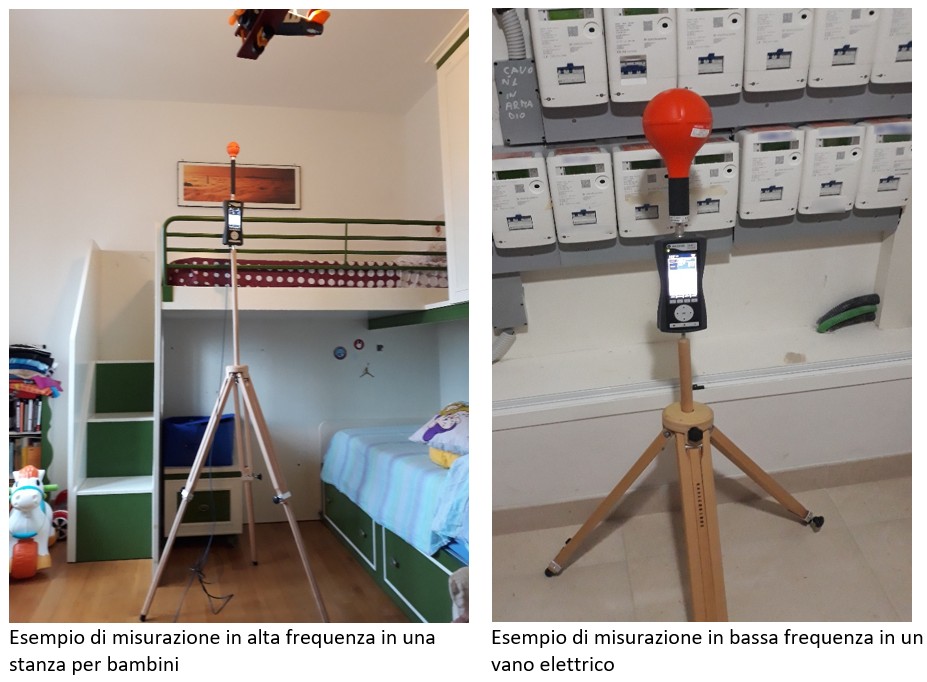The so-called “electrosmog” (i.e., electromagnetic waves from telecommunication systems and power lines) not being able to be perceived-unlike other forms of pollution-with the normal sense organs, is increasingly becoming a cause of some alarm and it is a fact that the sensitivity on this issue is greatly increased and is increasing as research and scientific literature deal with the possible risks from exposure to electromagnetic fields for prolonged periods and for these reasons, on the other hand, technical and legislative standards already prescribe the advisability of minimizing such exposures. For this reason, it is essential to use appropriate surveys and measurements to ensure that one does not live and work in conditions of potential risk for health and to be able to correctly assess the level of exposure to electromagnetic waves in homes, offices or workplaces, or in particularly sensitive environments such as courtyards, spaces intended for children’s play, etc.
The measurement of environmental electromagnetic fields is not trivial-as one might perhaps think, and requires very sophisticated instrumentation with high operating costs. In addition, alongside certified instrumentation special technical knowledge is needed to be able to assess the boundary conditions, identify the different types of sources and thus the potential risks and consequently the particular measurements to be made. It is also necessary to know how to interpret the measured data and compare them with current regulations.
For a preliminary assessment of high-frequency electromagnetic fields-i.e., those used by telephone repeaters (mobile phone base stations), within a dwelling, the procedure usually consists first of a visual assessment of the surrounding installations (distance, antenna orientations and types, etc.) and afterwards a subsequent choice of measurement of the overall electromagnetic field (in technical terms “broadband”) at selected and/or sensitive points in the dwelling (typically, it is preferred to assess rooms with prolonged occupancy, such as bedrooms, living rooms, children’s rooms, etc.) conducted by means of appropriate professional instrumentation.
For measurements involving power lines or power lines, or to assess exposure to various machinery, appliances, etc., it is necessary to do a low-frequency assessment, and then use the corresponding appropriate instrumentation.

Therefore, after receiving the order, an appointed technician will agree with the client on the date and time to take the measurements. It is essential to be able to carry out the measurements under appropriate conditions, i.e., without the presence of people within 2 meters of the instrument (which consists of a meter mounted on a tripod), and in a time interval appropriate to the purpose of the measurement itself, so it is recommended to set aside sufficient time for carrying out the measurements, usually from half an hour to a couple of hours, depending on the number of points you want to measure. For any outdoor measurements (gardens, verandas, terraces, etc.) it is essential to have good weather conditions and no strong wind. In any case, the Studio will provide all the desired information. Following the measurement, the results will be processed, interpreted and presented by means of a sworn technical report, either immediately (if possible) or usually within a few days.
Our measuring instruments are all of high professional range, with high standards of quality and reliability, and with accuracy required by technical standars CEI (Italian Electrotechnical Committee) in order to have legal validity and to compare the results with the values established by the standards in force.

